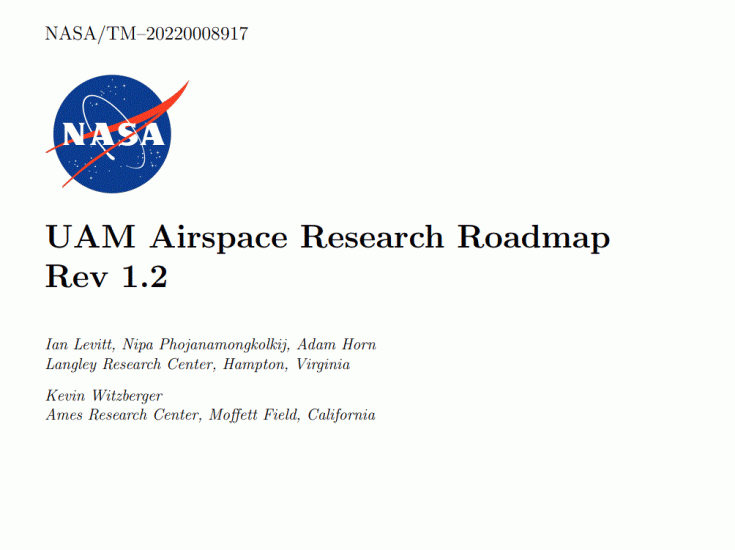US NASA Aeronautics Research Institute (NARI) has released the UAM Airspace Research Roadmap Rev 1.2 . Feedback is requested by 6 September 2022.
Feedback form here
The UAM Airspace research roadmap defined here is expected to be an important tool for the execution of NASA’s research over the next ten years, with the goal of evolving UAM airspace to UAM Maturity Level (UML) – 4. It provides a basis for prioritizing and coordinating research efforts, and for integrating results that build towards NASA’s research goals. The roadmap also has the potential to serve as a focal point for ongoing and continuous deliberation, as has been the case during its development. It naturally attracts questions and feedback that are beneficial to overall understanding, which is key to NASA’s leadership in defining the airspace of the future.
According to the roadmap, US UAM airspace system will move through a series of progressive stages, with each stage defined by a set of capabilities that have been enabled in the NAS. While any prediction of how these stages may progress will be uncertain, some reasonable path or set of paths can be established and refined as the research advances.
The process begins by identifying a discrete set of capabilities, which cover the UAM airspace system. These UAM airspace capabilities are derived from several sources, including the global ATM Concept, and the FAA’s NAS Enterprise Architecture. Each capability is then decomposed into an exhaustive list of constituent components. The components are generally functional, and work in combination to deliver the parent capability.
The progression of the UAM airspace system is then modelled by considering the set of requirements needed to enable the operations in each UAM Maturity Level (UML). In this way, each UML is modelled to represent a new set of requirements added to the UAM airspace system. The additional requirements will generally increase the functional performance of the components and therefore increase the associated capabilities.
To identify the requirements set associated with each UML, candidate requirements and assumptions are identified at a high level for each capability, and then listed progressively across the UMLs. These new requirements are generally based on existing research or traced from existing documentation but are also based on desired system constraints or are simply derived from subject matter expertise. The goal of the process is to increase the traceability to research results and 523 other sources, and in doing so mature the candidate requirements.
The current version of this document (v1.2) is in a development stage and relies on significant subject matter expertise for consistency and completeness. The targeted baseline version (v2.0) is expected to include more traceability to research and documentation.
For more information visit:
www.nari.arc.nasa.gov




